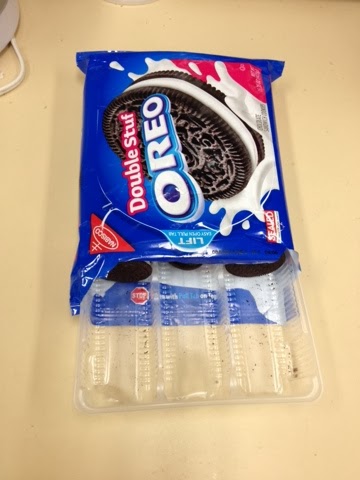Taxonomy is a wily beast. As François discussed in his previous post, keeping up with who is called what can be a complex issue. Species can be synonomized with other species, moved to other genera, split from their current species into a new species (or new genus), and back again and so forth. This can make things somewhat complicated for museum collections, especially when we receive collections that have been collected throughout history. We get specimens that have the ID that was correct when they were collected 50 years ago, but what is the current correct name? What is the name in our database? Is it one of those two or one of the many steps in between? There are a (very) few groups that have current taxonomy listings on line, but we deal with so many groups from so many phyla. It usually takes an expert, who is familiar with the current literature of their particular group to clear things up. Fortunately for us, we know an expert for one of our largest groups, the Unionidae family of freshwater mussels, and he’s recruited others.
Jim Williams, Matthew Rowe, and Jordan Holcomb have been combing through countless brown shells and getting our taxonomy in order.
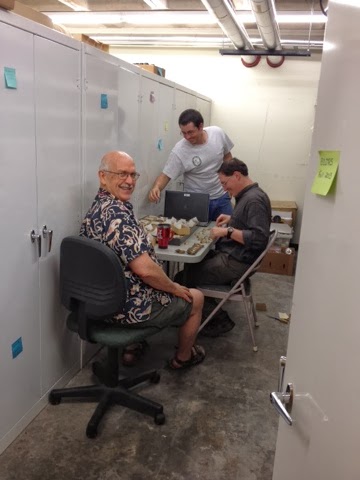
To give you an idea of what “countless” means…
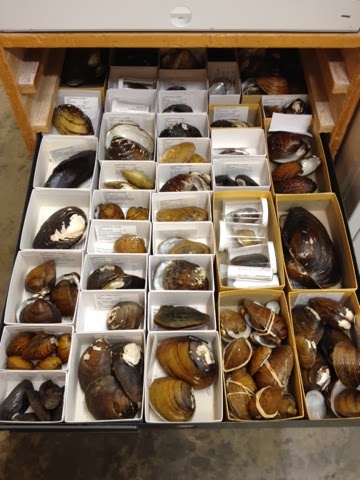
Yeah, you could totally count that, but multiply it by…
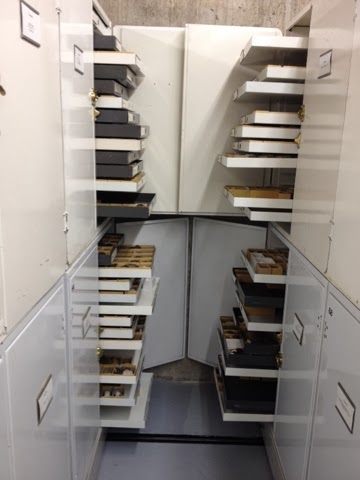
That’s still doable, might take a while, but…
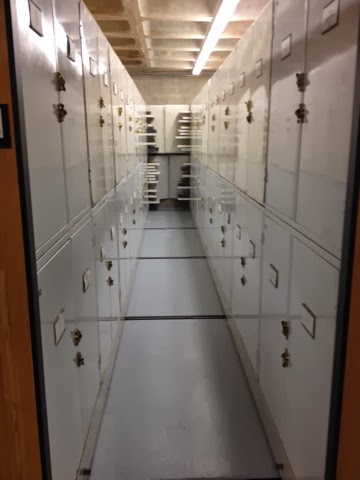
Nearly that entire aisle is Unionids, and there are even a few cabinets worth in the previous aisle. Let’s not forget the wet collection. Below is less than half of it.
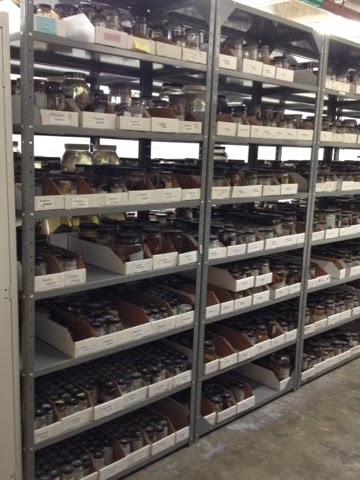
Even though they are all caught up on the current taxonomy of this group, it still isn’t always as straightforward as changing all specimens of one name to another. Here is an excerpt of an email I got from Jordan outlining the specimen labels they needed updated and printed for the Lampsilis teres/floridensis group:
We will need everything from Florida listed as Lampsilis teres to be changed to Lampsilis floridensis. All records from Georgia except those from Walker, Chattooga, Gordon, Floyd, Bartow, Whitfield, Murray, Gilmer, Catoosa and Polk counties listed as Lampsilis teres need to be changed to Lampsilis floridensis. Finally, all Lampsilis teres holdings in Alabama from Butler, Barbour, Chambers, Conecuh, Covington, Crenshaw, Coffee, Escambia, Dale, Geneva, Henry, Houston, Lee, Pike, and Russell counties should be changed to Lampsilis floridensis.
And this doesn’t even account for the L. teres floridensis that we had cataloged from Iowa and Arkansas, or the L. teres teres specimens that needed to become L. teres. So it’s complicated, and we are really grateful that they are willing to spend all this time and effort helping to get our collection up to date. We’re also grateful for the bribes they bring us to keep the updated labels flowing.
Unionids are a challenging group to work with, but the challenges that they present to us pale in comparison to the challenges with which humanity has presented them. Many species are critically endangered and some are suspected to now be extinct. As a freshwater group, they rely on many of the same waterways that we utilize for drinking water, power, recreation, and many other uses. Pollution and habitat loss have wreaked havoc on this group that is very sensitive to changes to their ecosystem. If you want to know more about Unionids, check out Jim’s book on the Alabama mussels, and keep your eyes peeled for his next one.
🙂 Mandy
